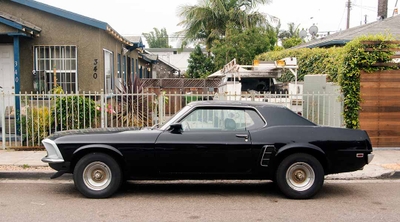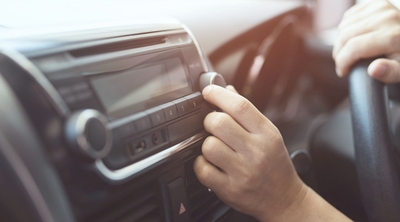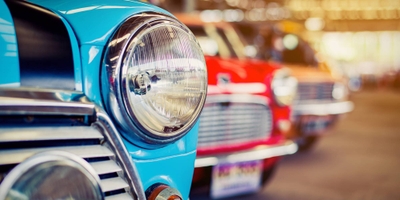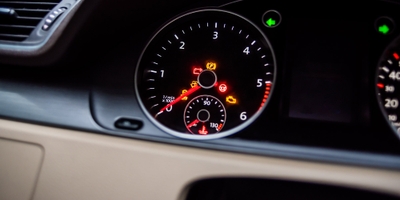Frame-off vs. frame-up restoration
4 min read
If you’re beginning the process of restoring a classic car or you’ve been looking at potential classic project car purchases, you’ve probably thought a lot about frame-off, or “rotisserie,” restorations. What do they really cost? What are the unforeseen complications? When is a frame-off restoration truly necessary, and when will a traditional frame-up restoration be sufficient to meet your needs?
As the great classic cars of the ’60s continue to age, more and more of them are getting to the point where they would truly benefit from this complicated and costly procedure. This can even be true of cars that were restored for the first time back in the ’80s and ’90s. No matter what people may say, there’s nothing truly simple about frame-offs, but they can be worth the hassle in a lot of instances. Let’s take a look.
How does a frame-off restoration work?
In most cases, a frame-off restoration starts by undoing the work that was performed at your car’s original point of assembly all those years ago! Back then, the workers would have started with the basic “X-frame” or “ladder frame” of your car, then put the engine and running gear on it along the assembly line. Around the middle of the line, the body would have been lowered onto the frame from above, at which point the two would be bolted together and the work of installing the interior trim could start.
For a frame-off restoration, you’ll usually start by clearing out the interior of your car body, then unbolting it from the frame and putting it aside. The engine, transmission, and suspension will be removed from the frame. Once it’s bare, the frame is bolted onto a cradle called a rotisserie. Rust and paint will be stripped, and any necessary metal repairs will take place. Then the frame is refinished, and the reassembly process can begin.
Sometimes the damage to the original frame is extensive enough that it’s simpler and smarter to just purchase a new aftermarket frame and reassemble the car that way. If you’re not too worried about originality, this is often the best way to go, as the cost can be lower, and the structural integrity of a brand-new frame is often much better than even a professionally repaired original.
It’s easy to tell when a classic car has had a true frame-off restoration, because you can look underneath and see the complete lack of rust, paint damage, and other telltale signs of wear and tear.
Frame-off or frame-up?
Should you go for a frame-off restoration or stick with a conventional frame-up in which the body and frame are left assembled for the restoration work? If you want the factory-new look, nothing but a frame-off will do, of course—but with cars that haven’t seen a lot of rust and corrosion, it’s often possible to get very good results without one.
An hour or so spent under your car with a strong flashlight and a folding dentist-style inspection mirror can help you make this choice. If you have a lot of corrosion on the body where it meets the frame, or vice versa, you may need to separate the two. If the connections and bolts are clean and clear, and you have room to reach and remediate the existing corrosion, you might not need to go through the effort of removing the body.
What will it cost?
Most top-line shops estimate an additional 200 – 400 hours for a frame-off restoration as opposed to a frame-up. That’s the time needed to separate the body and frame, perform the necessary work on the frame itself, then reassemble. At modern labor rates, that’s a serious commitment—and it really gives you a sense of how efficient that original assembly plant was when they built your car in just about a day and a half!
As with all restoration efforts, it’s often possible to have significant surprises along the way. The frame and body may look very solid to a flashlight, but they might crumble at the attachment points when they come apart for restoration. That will require a lot of additional work. Any time you’re unbolting things that have been together for 50 or 60 years, the unexpected can happen.
Make sure you set reasonable expectations with your restoration shop in advance, both for the likely amount of labor hours billed and the amount of time you’ll be waiting for your car to be completed. The restoration hobby has no shortage of stories in which a perfectly restored frame has sat on its rotisserie rig for years, waiting for a shop to have the time and space required to reunite it with its body.
What if my car doesn’t have a separate frame?
The phrase “frame-off restoration” is sometimes used with unit body cars that do not have a separate frame. In those cases, the body is stripped of everything before being placed on a different and more substantial rotisserie. These are the most intense restorations because corrosion removal and body restoration on unibody cars can be exceptionally difficult to perform. They were welded in a hurry as “boxes” on the assembly line, and no thought was given as to how easy it would be to get a cutting wheel and welding torch into the nooks and crannies decades later. For these jobs, find a shop with extensive documented experience in unibody rotisserie restorations, and get a solid estimate upfront.
One final catch
When talking to owners of cars that have had full frame-off restorations, one unexpected drawback comes up repeatedly: Having restored a vehicle to factory-new perfection, it can be a little worrisome to put it back on the road! The first time you hear a rock or piece of road debris kick up into the frame you spent a few hundred hours getting back to perfection … that’s a tough day. Don’t worry! There’s a saying in the hobby: “It’s only original once.” But a good frame-off restoration can have your car looking, and feeling, just as good as it did the day it left the factory—and if you need to someday, you can always do it again!
When you’re ready to put your restored classic car back on the road, get the right coverage that fits your needs. The only thing you’ll have to worry about is where your next drive will take you.






